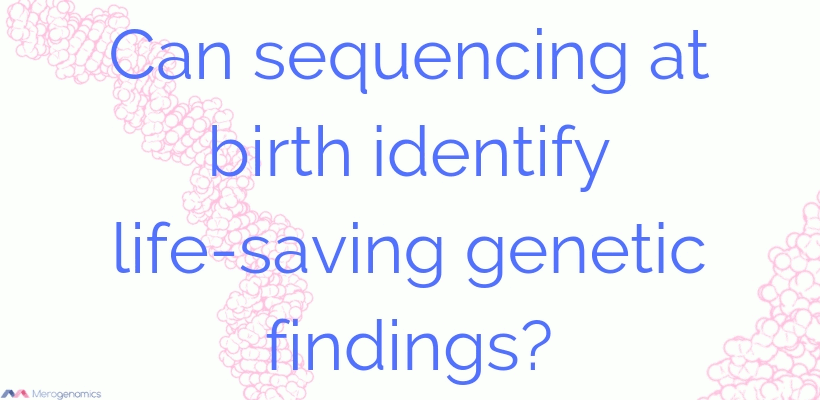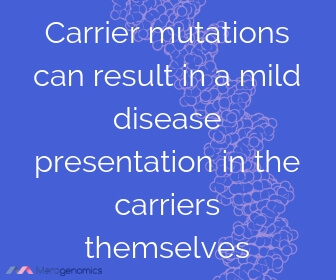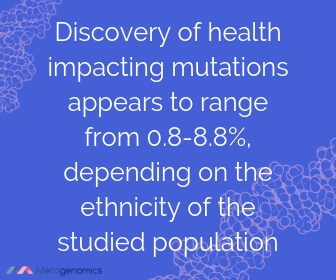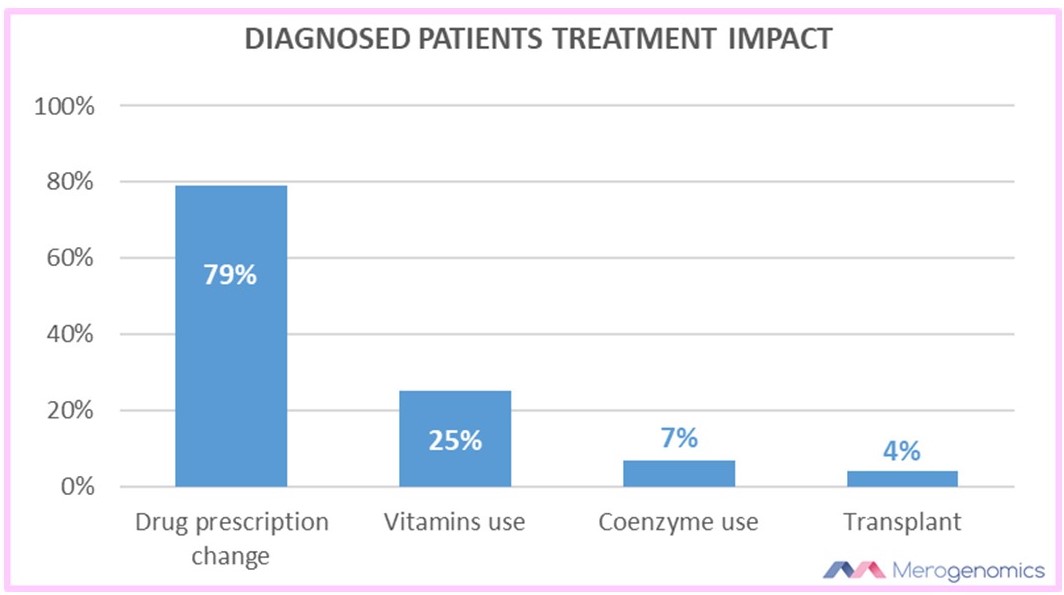INVITED POSTS

The value of DNA sequencing at birth
Dr.M.Raszek
Should DNA testing at birth be a standard?
Can sequencing at birth identify genetic findings that are potentially life-saving? Finally, the first results from the BabySeq project which investigated the impact of full genome sequencing in babies soon after birth suggest that DNA testing can uncover the risk of childhood-onset disease in much higher rates than previously anticipated, at nearly 10% of infants (9.4%). We are talking about conditions that were otherwise completely unanticipated to be present in these children based on their appearance, clinical examination, or family history. Furthermore, adult-onset conditions, which are typically not recommended to be investigated in children, were discovered at a rate of 3.5% in otherwise presumed healthy infants. In this case, this was cancer predisposition, which was very important information to have for the parents of such children, even if the children would not need to know such information until their adulthood, or an age where they would be mature enough to understand and cope with such information. These mutations were also found in the mothers of these children, thus providing the opportunity for early interventions and potentially lifesaving consequences for parents themselves.
In addition, 88% of the infants also had important carrier status information that could impact their future reproductive decisions. Carrier status refers to the mutations the individual carries that is typically not going to manifest in a disease in that person, but if same gene mutations were also found in the partner with which they were to have children, they would run the risk of producing offspring with a disease. But of the children that were carriers of DNA mutations that could be affect future offspring, 4.3% had mutations that previously have been shown to result in a mild presentation in the carriers themselves. Thus, sometimes carriers can be impacted too. Finally, 5% of these children also provided DNA information relevant to medications used in pediatrics (testing for three genes only).
These are significant findings because more research just got published indicating that genetic diseases in children require a disproportionate amount of healthcare dollars to properly treat. This is in large measure due to the lengthy process in actually properly diagnosing the condition. While accounting for 2.6-14% of total pediatric cases, the cost to process children with a genetic disease amounted to 11-46% of the total expenditure, equating to $14-57 billion USD. We are talking about $16,000–77,000 higher in neonates and $12,000–17,000 higher in pediatric patients as compared to children admitted with non-genetic conditions. Furthermore, children suspected to have a genetic disorder were more likely to undergo additional surgical procedures, stay in the hospital longer, and have higher mortality rates than the rest of the treated children. Children with birth defects associated with genetic conditions had the largest aggregate cost totalling up to $13 billion USD.
Genetic diseases are not so rare
This clearly points to the need of earlier detection and diagnosis of genetic conditions, as indicated by the researchers themselves, and what better way to help alleviate that problem than DNA sequencing? This type of research once again supports the previous studies indicating the likelihood of discovering health-related mutations in DNA, a topic we have recently covered extensively. This is closely matched by the rate of incidental findings, or the discovery of mutations not related to the original health problem for which the patient was investigated, which appears to range from 0.8-8.8%, depending on the ethnicity of the studied population. These figures are based on the investigation of only a small subset of genes out of the entire genome, a gold standard of 59 genes definitively known to be involved in the development of diseases for which some medical intervention is currently available, published by the American College of Medical Genetics (ACMG). The BabySeq project discussed above was far broader in its scope, assessing more than 900 genes for potential disease conditions. Otherwise, only 4.1% of the studied children would have received the results if only the ACMG genes were to be assessed.
Interestingly, of these 59 genes, 24 are associated with cancer predisposition, and one recent scientific research investigated the likelihood of uncovering DNA mutations in cancer predisposing genes, in cancer patients or a presumed healthy population. It was discovered that 1.2% of cancer patients had mutations in one of these 24 cancer predisposing genes, compared to 0.8% for the healthy control population. However, once again, this is based on what is found when assessing the ACMG gene list. Genetic cancer predisposition has recently been observed to be found in approximately 8% of all cancer patients.
Plus the rate of discovery in the BabySeq project also seems to be closely matching the current estimates of genetic diseases observed in the US population, with approximately 25 million Americans afflicted with a rare disorder, according to the Undiagnosed Disease Network, a research institute founded by the National Institutes of Health in 2014. With the US population standing at 325 million, that’s approximately 7.7% of the population. At a recent international symposium on human genome editing held in November of 2018, Dr. Matthew Porteus placed that figure at 30 million Americans.
According to a recent publication, the Undiagnosed Disease Network has been able to help about one third of patients that have been evaluated by the network (out of a total of 601 patients), and the vast majority of those, approximately three quarters of rare disease patients were diagnosed thanks to DNA sequencing technologies. Of these, 11% were diagnosed based on the re-analysis of previously available exome sequencing data (decoding of all of the genes in the genome), 56% were made available with new exome sequencing data, and 33% required full genome (entirety of DNA), sequencing for identification of the condition.
Of the patients who received the diagnosis, 21% of these patients resulted in treatment changes. This included changes in drug prescriptions in 79% of the patients, the use of vitamins in 25%, a coenzyme use in 7%, and a transplant in 4%. Nearly 30% of these patients exhibited positive treatment impact (14% of the patients did not initiate treatment and in 36% the treatment impact could not yet be determined). In addition, 37% led to a change in care other than therapy. Of the diagnoses that were identified, 58% were previously known conditions, 18% were unusual presentations of a known syndrome, 12% were new conditions associated with a known gene or gene region, and 11% were new conditions in a new gene or gene region. In total, only based on these 601 patients, 31 new conditions were identified by the Undiagnosed Disease Network!
Even more shocking is the fact that the average cost of diagnosing these individuals was nearly $19,000 USD compared to over $305,000 cost of care of each of these patients prior to reaching diagnosis! When you look at these numbers in such a way, it paints a different picture of the value of being able to obtain immediate diagnosis with full genome sequencing immediately after birth. In the long term, DNA testing technologies will save us tons of money! This is yet further evidence of the clinical utility of genome sequencing, a topic we previously wrote about.
What future of genetic medicine might look like
We are currently talking about using DNA sequencing only for diagnosing purposes. There is also the entire spectrum of future possibilities where we will be altering the DNA in order to remove a debilitating medical condition and improve an individual’s quality of life. This may be happen after birth or even before birth! While technologically we might still not be ready for such steps in embryos, this has already taken place with the recent revelation of the first genetically modified babies born in China, announced late last year! As shocking as that was, the latest polls suggest that most Americans actually favour use of gene-editing technology to protect babies against the onset of diseases, although they draw the line against cosmetic enhancements. The poll was conducted after the announcement by the instantly famous (or infamous), Dr. Jiankui He who helped to alter genomes of embryos in a misguided attempt to prevent HIV infection, and which eventually resulted in live birth of two girls. Incidentally, since the announcement in November of 2018, Dr. Jiankui He appears to be under house arrest in China while the preliminary investigation into He’s embryo genetic modification appears it was illegal. His revelations were really not received well. While perhaps the use of genome editing technology is currently premature, it is certain to eventually make its way into medical practice.
As one example of the things to come, last year researchers were able to actually cure genetic conditions in fetuses during pregnancy, in mice! The corrective mechanism used was not the currently celebrated CRISP/Cas9 system, but a completely different technology that relies on a synthetic peptide (a molecule made up of the same molecular components as found in the proteins in your body, but much smaller in size), combined with a DNA fragment which together targeted the genome area of interest. This was then injected into the amniotic fluid of the pregnant mice, and only one application was needed to alter a sufficient amount of fetal cells to result in offspring no longer showing signs of the disease, in this case β-thalassaemia condition. β-thalassaemia, a group of blood disorders, is not some rare event either, as an estimated 60,000 babies are born with different forms of β-thalassaemia disorders each year.
The exciting part of this experiment was that unlike the problems associated with the CRISP/Cas9 system such as its large size (making it difficult to deliver to cells), and the alteration of the DNA at undesired sites, this new approach uses much smaller components that could be delivered to cells by means of already approved for use nanoparticles, and did not appear to lead to the modification of DNA besides the change of mutation that caused the disease. Being able to use such technology to treat babies during pregnancy is certainly a massive step forward to help us deal with genetic diseases in the future.
In another example of a genetic disorder cure breakthrough, in the first-of-its-kind, just at the end of 2018, a gene therapy treatment for spinal muscular atrophy, was approved by the FDA for fast-track review. Spinal muscular atrophy is a severely debilitating neuromuscular disorder caused by a mutation in the SMN1 gene. Incredibly, the treatment is a one-time infusion of a virus that contains the correct version of the SMN1 gene. Even more incredibly, this treatment is expected to cost $5 million per patient! The virus used for the delivery of correct genetic material is the adeno-associated virus, selected because it almost always inserts itself in a very specific location of the genome. In this case, the genetic modification to treat the disease takes place after birth. This type approach is being studied in the treatment of many other diseases, including Parkinson’s Disease gene therapy in adults.
So it is not difficult to get excited about the potential of future medicine to treat genetic conditions. And the fact that we now have the relatively easy means to diagnose so many of them through DNA sequencing.
As for yourself, don’t hold your breath that genome sequencing will be coming to the clinic near you tomorrow, or that your baby will be sequenced upon birth as part of the healthcare standard! While clinical genomics is increasing in use, if you want to use DNA testing to diagnose your existing mysterious health ailment, unless you are accepted into a research program like the one described above, you likely will be paying out of pocket for such a privilege. And this certainly goes for presumed healthy individuals who want to use the power of genomics to screen themselves for potential future or undiagnosed conditions. But you can already see how DNA sequencing eventually will become a standard.
This article has been produced by Merogenomics Inc. and edited by Kerri Bryant. Reproduction and reuse of any portion of this content requires Merogenomics Inc. permission and source acknowledgment. It is your responsibility to obtain additional permissions from the third party owners that might be cited by Merogenomics Inc. Merogenomics Inc. disclaims any responsibility for any use you make of content owned by third parties without their permission.
Products and Services Promoted by Merogenomics Inc.
Select target group for DNA testing
Healthy screening |
Undiagnosed diseases |
Cancer |
Prenatal |
Or select popular DNA test
 |
 |
 |
 |
Pharmaco-genetic gene panel |
Non-invasive prenatal screening |
Cancer predisposition gene panel |
Full genome |











